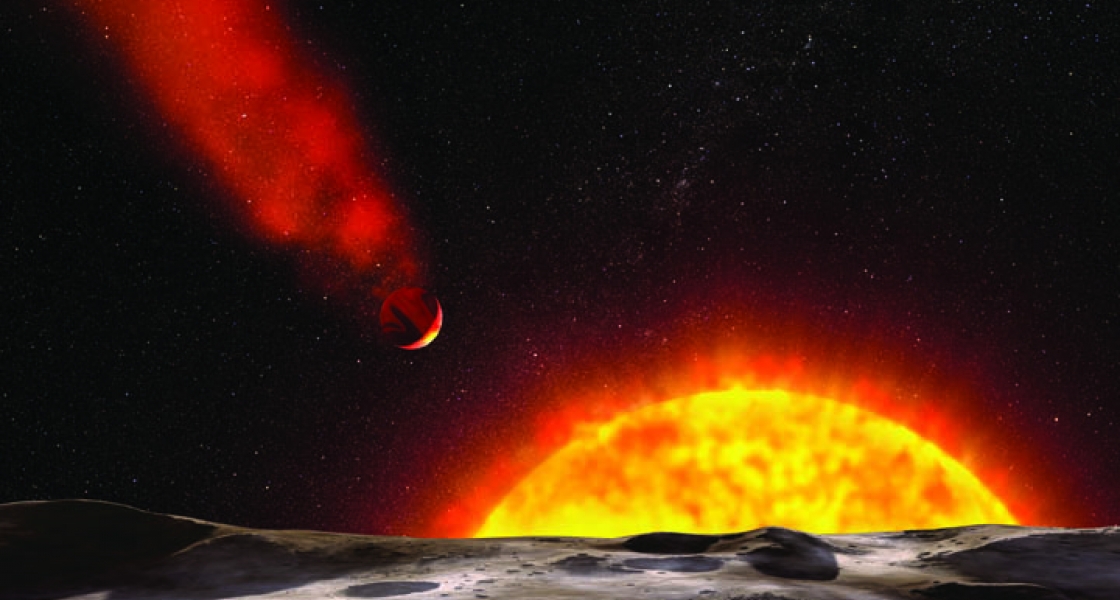A faint star that can easily be seen from Earth with binoculars has a Jupiter-like gas planet orbiting it once in just three days. That means the planet is close enough to its Sun-like star to get scorching hot, which affects both the planet and its atmosphere. The star is called HD209458, and its planet’s moniker is HD209458b.
Recently Fellow Jeff Linsky, research associate Hao Yang, and their colleagues from CU’s Center for Astrophysics and Space Astronomy learned a lot more about the planet and its star by analyzing data from the new Cosmic Origins Spectrograph (COS) aboard the Hubble Space Telescope. COS is a moderateresolution ultraviolet spectrometer that was able to observe the planet both in front of the star and off to one side. When the planet was in front of the star, it obscured a portion of the starlight and made it easier to measure the absorption by ionized carbon and silicon gas in its bloated atmosphere.
The first thing Linsky and Yang noticed was that if the planet was really the size of Jupiter, it should cover only about 1.5% of the star’s surface instead of the 8% observed by COS. They quickly realized that the star was heating up the planet’s atmosphere, causing it to expand to its bloated condition. The expansion of the atmosphere corresponded with a loss of mass from the planet. Plus, the atmosphere extended so far away from the planet that some of it was getting lost in space. This is the fi rst exoplanet discovered to have an exosphere!
The most exciting discovery was that powerful stellar winds appear to be pushing the exosphere away from the planet, causing the planet to have a cometlike tail. The tail is aimed directly toward us Earthlings, so we don’t see it directly. However, if we could see this interesting exoplanet up close and from a different angle, it would look a lot more like a comet than like a planet! - Julie Phillips




